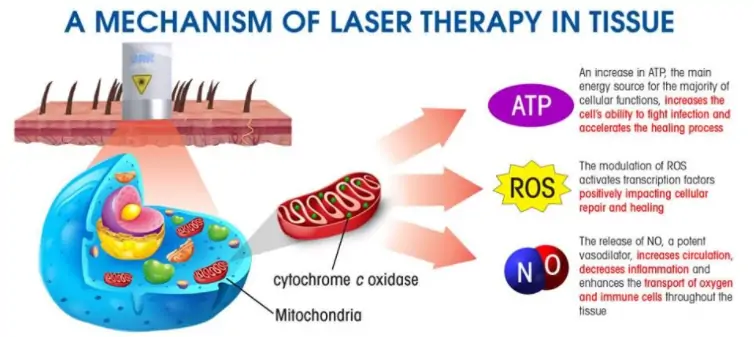
Low-level laser therapy (LLLT) is a type of laser therapy that uses low-level lasers to treat various conditions. LLLT is considered safe and non-invasive, and it has been shown to have a number of health benefits.
The therapeutic effects of LLLT are believed to be due to the photobiomodulation (PBM) mechanism. PBM involves the stimulation of the body’s natural healing process through the absorption of light by cells. The absorbed light energy is then converted into thermal energy, which causes local heating of the tissue. This thermal energy triggers a number of biological responses, including the activation of macrophages and neutrophils, which promote healing.
LLLT devices typically use lasers with wavelengths between 600 and 1000 nanometers. These lasers are low-powered, with energy outputs typically in the microjoule to millijoule range. The low energy output of LLLT devices means that they are not capable of causing damage to the tissue, even if repeated exposures are given.
LLLT has been used to treat a range of conditions, including pain, spasticity, and inflammatory conditions. It has also been shown to have benefits in the treatment of wounds, burns, and skin conditions. LLLT is thought to be particularly useful in the treatment of chronic conditions, such as osteoarthritis and fibromyalgia, as it can promote healing and reduce pain without the need for prolonged treatment periods.
It is important to note that the use of LLLT is still relatively new, and more research is needed to confirm the effectiveness of LLLT for various conditions and to determine the optimal treatment regimen. Additionally, the safety of LLLT needs to be evaluated in long-term studies. However, the early results suggest that LLLT may be a safe and effective alternative to traditional medical treatments.


